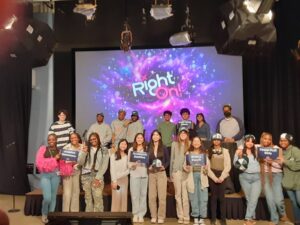
Based on the review of Phase I abstracts and lessons learned from previous years, we’ve compiled tips for developing clear and compelling proposals.
Please note that this blog is specifically designed for Phase II applicants in DARPA’s Building an Adaptive & Competitive Workforce track. Phase II is closed for all other tracks.
Phase II will require a detailed proposal, and submissions that do not reflect these guidelines will not advance. We recommend you review and revise your proposals with these suggestions in mind.
Tip 1: Review the track’s objectives and rubric—and tailor your proposal to address these components.
In Phase II, proposals will be scored according to track-specific rubrics.
Rubrics are accessible to applicants and serve as a valuable resource for you to help refine your idea, develop a competitive proposal, and ensure that your submission addresses the points required. Rubrics alongside track objectives provide clear expectations for what constitutes a high-quality proposal.
You can download the rubrics, better understand track objectives, and review examples of past winners by visiting the Building an Adaptive & Competitive Workforce track page.
We highly recommend developing your proposal alongside the rubric and your track’s objectives, addressing each component clearly and thoroughly. If your tool meets any competitive priorities for your selected track, please emphasize this in your proposal.
Tip 2: Ensure there is an explicit learning engineering focus.
All proposals are required to address how the proposed tool supports learning engineering—a core objective of the Tools Competition.
Learning engineering prioritizes continuous data- and research-driven improvements in learning technologies and student outcomes. We are in search of tools that leverage data and research to (1) draw insights about learning (e.g., how users learn, what works for learning); (2) continuously improve the product, and (3) demonstrate efficacy.
Ensure that your proposal addresses the following:
- How your tool generates learning data and what data it generates.
- How the data collected could be used to better understand learning.
- How your tool is/will be designed to support research (e.g., A/B testing, randomized-controlled trials).
- How the tool collects data that can inform and improve its future iterations.
Applicants at the Growth and Transform phase are required to detail a learning engineering plan. See more on that requirement here.
For more resources on learning engineering and designing your platform to leverage data (instrumentation) see our Learning Engineering Resources and blog.
Tip 3: Include a clear description of your tool or technology.
We strongly recommend you clearly describe your tool or technology, using plain language. This may seem obvious, but organizers need to understand what your tool does. There is no need to oversaturate your proposal with jargon, acronyms, or technical language. Reply clearly and directly to the questions in the proposal and ensure that readers can clearly understand:
- What the tool is.
- How it works.
- How users interact with it.
- What happens on the backend, such as the technology it leverages and the type of data it collects.
- What you are proposing (see Tip 4 below).
Ensure you structure your proposal in key sections and write in clear, comprehensible language. We also recommend having a person unfamiliar with your work check your proposal for clarity.
Tip 4: Detail what specifically you are proposing. What is “new” about your proposal?
The Building an Adaptive & Competitive Workforce track seeks to spur new tools and technologies. We must be able to clearly understand what your proposal seeks to fund as a result of this funding.
If you are competing at the Growth or Transform award levels, this does not mean that the tool itself needs to be completely new. In these cases, the proposal should clearly articulate what new component of the existing product the funding will support (e.g., a new feature, update to the product, expansion of the product scope, etc.).
Strong proposals will also outline what sets their tool apart from similar tools that already exist.
Tip 5: Confirm your tool fits the award level and track eligibility criteria.
Carefully review the award level and overall eligibility criteria. You can read more about both of these areas in the track’s FAQs.
Regarding award level specifically, Growth and Transform awards are reserved for tools that currently have some scale. The Transform level requires 10,000 or more users. If you are not able to demonstrate that you’ve met the required scale in your proposal, we strongly encourage you to consider a different award level.
Tip 6: Set clear, measurable, and realistic goals.
Compelling proposals will include goals—and benchmarks that can be used to measure progress towards those goals. This might look something like:
- “In Q3 of 2024, we will develop partnerships with five industry leaders.”
- “By December 2024, we will reach 1 million downloads with at least 40% of our users being active.”
Ensure that goals are realistic and achievable with the amount of funding for your selected award level. The Tools Competition does not set requirements around your project timeline and goals, but we will use this to understand scope, scale, ambition, and feasibility. As a winner, we expect that you will carry out the project according to the plan detailed in your proposal.
Tip 7: Incorporate the need and demand of users into the design and development of your tool—and communicate this in your proposal.
We are looking for user engagement at every stage of development and implementation. This can look like conducting interviews or focus groups to understand user needs, iterating the functionality or features of your tools based on user insights, designing the user interface based on feedback, etc.
Visit our blog to learn more about engaging end users, and view case studies of how previous winners of the Tools Competition—Springboard Collaborative, Podsie, and Top Parent—have successfully engaged users in their work.
Tip 8: Take advantage of the available applicant supports.
We offer a number of resources designed to support you in crafting a compelling Phase II proposal. These include rubrics, info sessions on proposal requirements, and drop-in office hours sessions.
Please refer to the email you received from track organizers inviting you to Phase II, which also has registration links for support events.
Tip 9: Adhere to guidelines and the submission timeline.
Please ensure you follow all submission guidelines including:
- All proposals must be submitted in English.
- Your proposal must follow the structure provided in the online submission form.
- Do not include additional links or non-requested attachments within your proposal. Organizers will not review additional materials.
- Any images included in your proposal should supplement the written content. In other words, the written proposal should stand on its own independently without images.
- We cannot accept submissions after 11:59:59 pm Pacific Standard Time on April 22, 2024 for the Building an Adaptive & Competitive Workforce track. Please DO NOT wait until the last minute to submit your proposal as we cannot grant any extensions.
If you have any questions, contact our team at ToolsCompetition@the-learning-agency.com



